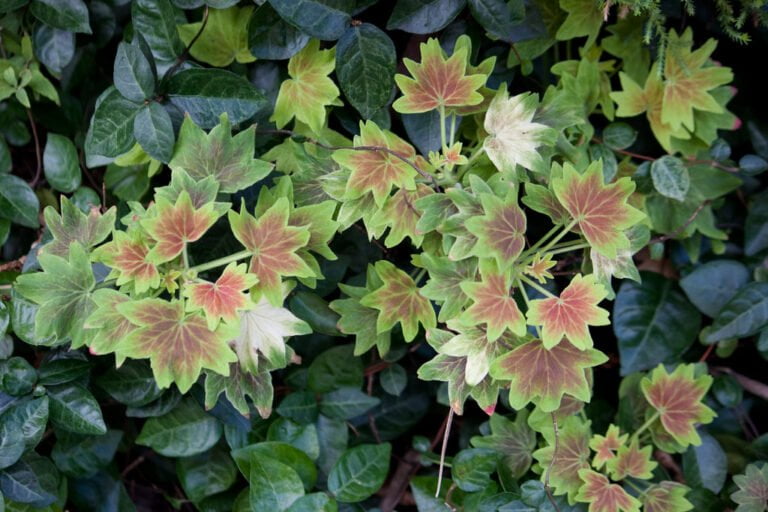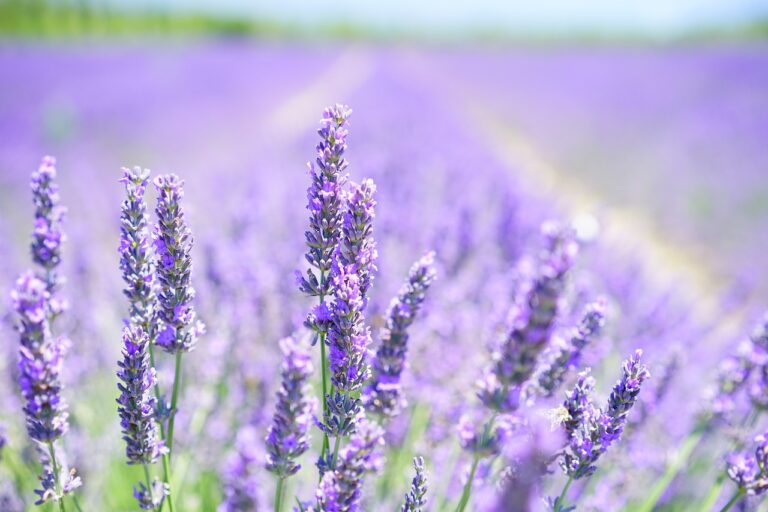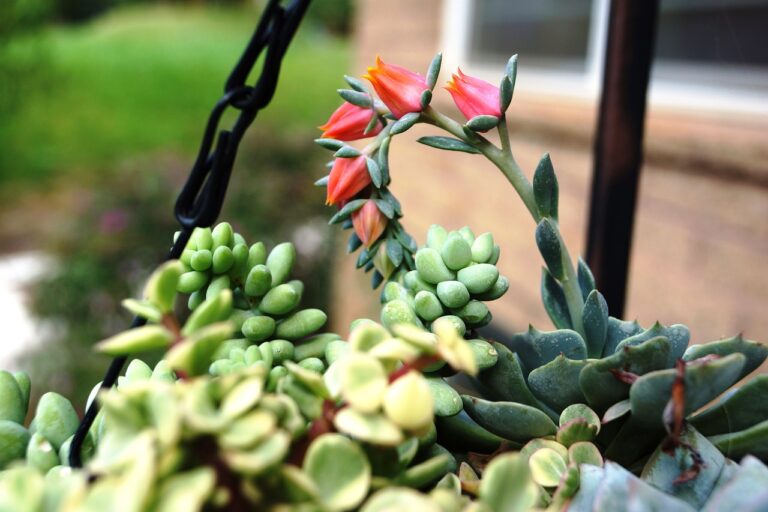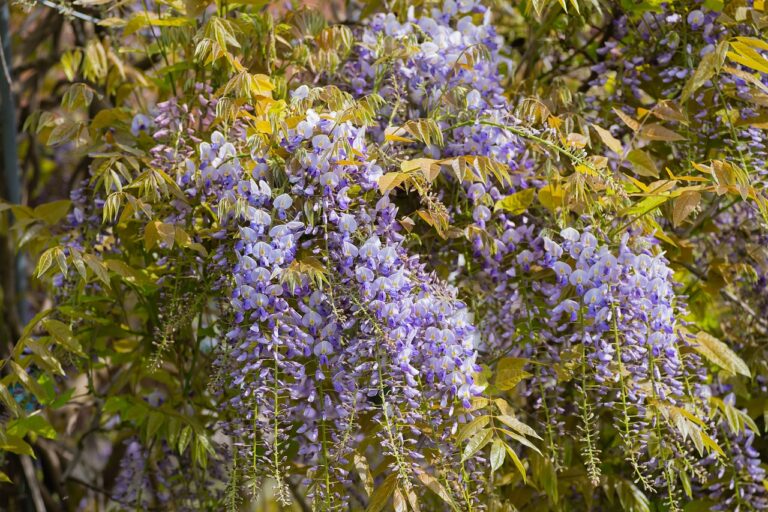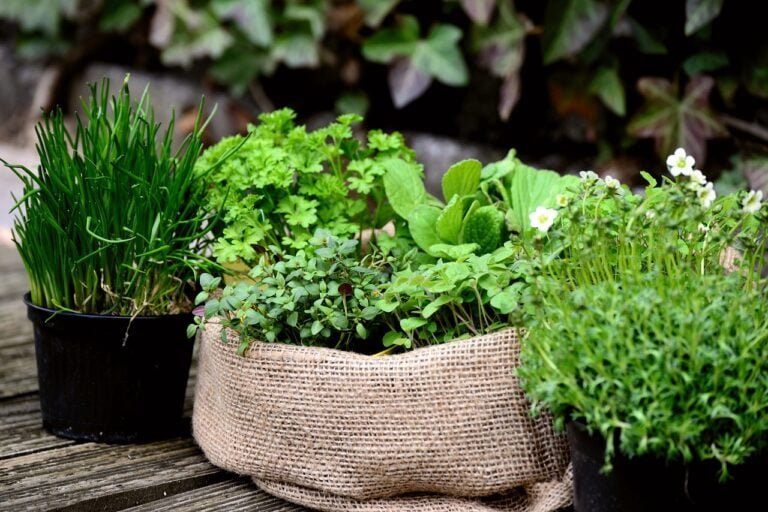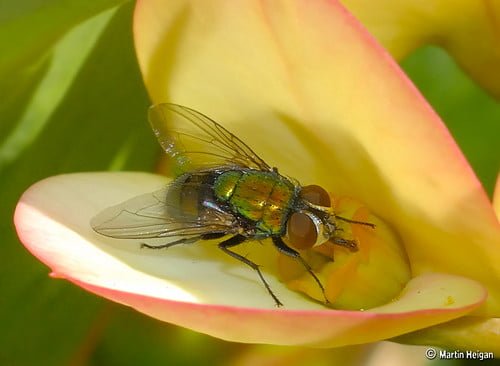Exploring the Benefits and Uses of Lavender and Marigolds
Discover the incredible benefits and versatile uses of lavender and marigolds. You'll be amazed at how these plants can enhance your well-being and everyday life. From soothing aromatherapy to culinary delights, lavender offers a range of benefits. Meanwhile, marigolds possess medicinal properties and can be used for natural dyeing. Learn how to create your own lavender-infused products and use marigolds as pest repellents. With these practical tips and tricks, you'll be able to incorporate lavender and marigolds into your gardening, crafts, and decorations effortlessly.
Aromatherapy Benefits of Lavender
Discover the soothing and calming effects of lavender through the practice of aromatherapy. Lavender is a versatile essential oil that has been used for centuries to promote relaxation and reduce stress. Its gentle and floral scent can help create a peaceful atmosphere, making it an ideal choice for those who desire to serve others by creating a tranquil environment. Lavender essential oil can be diffused in a room or added to a carrier oil for a relaxing massage. It can also be used in a bath to promote deep relaxation and improve sleep quality. Additionally, lavender can be applied topically to help soothe minor skin irritations and promote a sense of well-being. Incorporating lavender into your daily routine can provide a natural and effective way to enhance your overall well-being and support your desire to serve others.
Culinary Uses of Lavender
Are you curious about the culinary uses of lavender and how it can enhance your cooking experience? Lavender is not just a beautiful and fragrant flower, but it can also be a delightful addition to your culinary creations. Its unique flavor profile adds a subtle floral and slightly sweet taste to dishes, making it a versatile ingredient in both sweet and savory recipes. One popular way to incorporate lavender into your cooking is by infusing it into oils, syrups, or vinegars. This creates a fragrant base that can be used in dressings, marinades, or even drizzled over desserts. Additionally, dried lavender buds can be ground and used as a spice in baking, giving a lovely lavender aroma to cakes, cookies, and breads. So, why not experiment with lavender in your kitchen and elevate your dishes with its delightful flavor?
Skin Care Benefits of Lavender Oil
To enhance your skincare routine, incorporate lavender oil for its numerous benefits. Lavender oil is known for its soothing and calming properties, making it a great addition to your skincare regimen. It has anti-inflammatory properties that can help reduce redness, inflammation, and irritation on the skin. Lavender oil also has antimicrobial properties, which can help prevent and treat acne breakouts. Its gentle nature makes it suitable for all skin types, including sensitive skin. You can use lavender oil by adding a few drops to your favorite moisturizer or facial oil, or by creating a DIY face mask or toner. Additionally, lavender oil can also be used as a spot treatment for blemishes or as a natural remedy for dry and chapped lips. Incorporating lavender oil into your skincare routine can bring about noticeable improvements in your skin's appearance and overall health.
Medicinal Properties of Marigolds
Marigolds possess numerous medicinal properties that can benefit your health in various ways. These vibrant flowers are not only beautiful to look at but also have a long history of being used for their healing properties. Marigolds are known for their anti-inflammatory and antimicrobial properties, making them effective in treating skin irritations, wounds, and infections. They can also be used to alleviate digestive issues like ulcers, gastritis, and diarrhea. Marigold tea is a popular remedy for menstrual cramps and can help relieve pain and discomfort. Additionally, marigold extracts have been found to have antioxidant properties, which can help boost your immune system and protect your body against free radicals. Incorporating marigolds into your health routine can provide natural and effective remedies for various health concerns.
Natural Dyeing With Marigolds
Enhance your creativity by exploring natural dyeing techniques using the vibrant petals of marigold flowers. Marigolds, with their beautiful shades of yellow and orange, can be used to create stunning and eco-friendly dyes for your fabrics and crafts. To start, gather a handful of marigold flowers and remove the petals. Place the petals in a pot of water and bring it to a gentle simmer. Let the petals steep for about an hour, stirring occasionally. Once the water has taken on a rich, golden color, strain out the petals and return the liquid to the pot. Add your fabric or yarn to the dye bath, ensuring it is fully submerged. Let it simmer for another hour, or until the desired color is achieved. Rinse the fabric thoroughly and let it dry. Now you can proudly showcase your naturally dyed creations, knowing that you have used a sustainable and beautiful method.
Companion Planting With Lavender
Planting lavender alongside your other garden plants can provide numerous benefits. Lavender is not only a beautiful and fragrant addition to your garden, but it also has practical uses. One of the main benefits of companion planting with lavender is its ability to repel pests. The strong scent of lavender acts as a natural deterrent for insects like mosquitoes, flies, and moths. By planting lavender near your other plants, you can help protect them from these pesky pests without resorting to harmful chemicals. Additionally, lavender attracts beneficial insects such as bees and butterflies, which can help with pollination in your garden. So not only will companion planting with lavender add beauty to your garden, but it will also serve as a natural pest control and support the ecosystem.
DIY Lavender-Infused Products
To continue benefiting from the versatile lavender plant, you can easily create your own DIY lavender-infused products. Lavender has long been used for its soothing and calming properties, making it the perfect ingredient for a variety of products. One simple way to incorporate lavender into your daily routine is by making a lavender-infused oil. To do this, heat a carrier oil, such as olive or jojoba oil, and add dried lavender flowers. Let the mixture steep for a few weeks, strain out the flowers, and you'll have a fragrant oil that can be used for massage, moisturizing, or even as a natural perfume. Another popular lavender-infused product is bath salts. Simply mix Epsom salts with dried lavender flowers and a few drops of lavender essential oil for a relaxing and rejuvenating soak. With just a few ingredients and a little bit of time, you can create your own lavender-infused products to enjoy the benefits of this amazing plant.
Marigolds as Pest Repellents
If you're looking for an effective way to repel pests, consider incorporating marigolds into your garden or outdoor space. Marigolds have long been known for their ability to naturally deter a variety of pests, making them a beneficial addition to any garden. The strong scent of marigolds is particularly effective in repelling insects like mosquitoes, aphids, and whiteflies. Additionally, marigolds can help to protect other plants in your garden by repelling harmful nematodes that can damage their roots. To maximize the pest-repellent properties of marigolds, it is recommended to plant them in close proximity to the plants you want to protect. Whether you have a vegetable garden or a flower bed, marigolds can serve as a natural and reliable pest control solution.
Lavender and Marigold Crafts and Decorations
To incorporate lavender and marigolds into your crafts and decorations, you can explore a variety of creative and unique uses for these versatile flowers. Lavender can be dried and used to make fragrant sachets or potpourri. You can also make lavender-infused candles or soap for a calming and aromatic touch to your home. Marigolds, on the other hand, can be used to create vibrant and cheerful floral arrangements. Their bright colors can add a pop of color to wreaths or table centerpieces. You can also dry marigold petals and use them to make natural dyes for fabrics or paper. Additionally, both lavender and marigolds can be incorporated into homemade bath products, such as bath salts or bath bombs, for a luxurious and soothing experience. Get creative and let these beautiful flowers inspire your crafting projects!
Lavender and Marigold Gardening Tips and Tricks
Now let's delve into some practical gardening tips and tricks for incorporating lavender and marigolds into your outdoor space. Lavender is a versatile plant that thrives in well-drained soil and full sunlight. When planting lavender, make sure to space them about 12 to 18 inches apart to allow for proper air circulation. Prune the plant in early spring to promote new growth and maintain its shape. Marigolds, on the other hand, are easy to grow and are great for repelling insects. Plant marigolds in well-drained soil and provide them with full sunlight. Deadhead the flowers regularly to encourage continuous blooming. Marigolds can also be used as companion plants to deter pests in vegetable gardens. Remember to water both lavender and marigolds regularly, but avoid overwatering to prevent root rot. With these tips, you can enjoy a thriving and beautiful garden with lavender and marigolds.
Conclusion
In conclusion, lavender and marigolds offer a multitude of benefits and uses that can enhance various aspects of our lives. From the calming effects of lavender in aromatherapy to the vibrant colors marigolds can provide in natural dyeing, these plants have proven to be versatile and practical. Whether you're looking to improve your skin care routine, repel pests in your garden, or create DIY lavender-infused products, incorporating lavender and marigolds into your life can bring both beauty and functionality.

